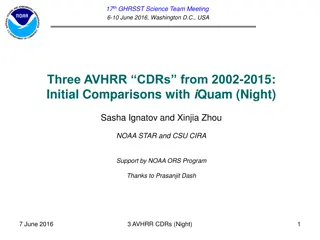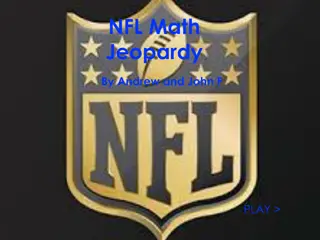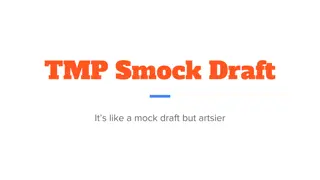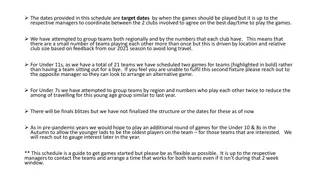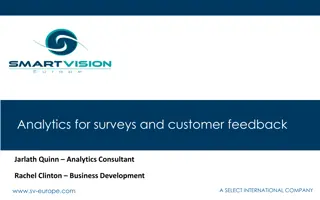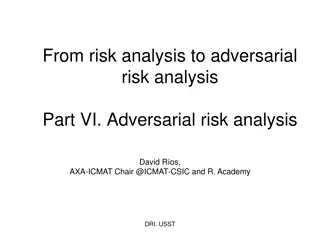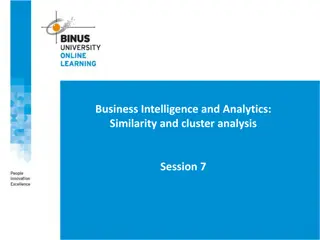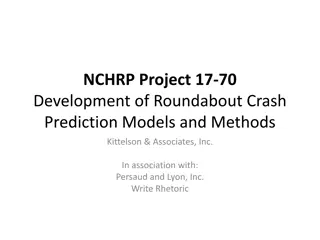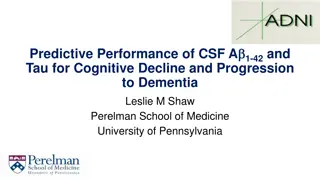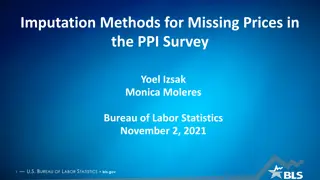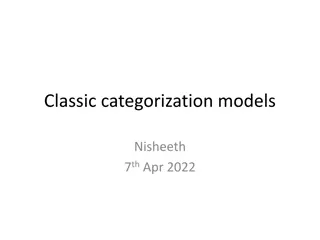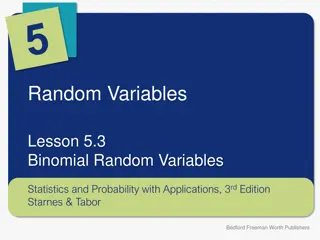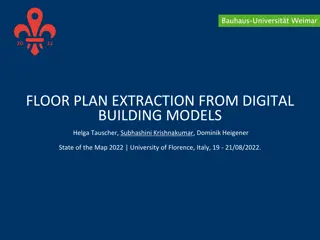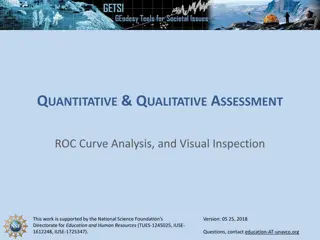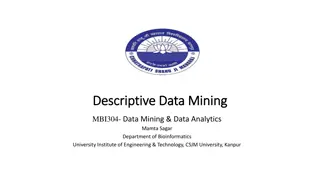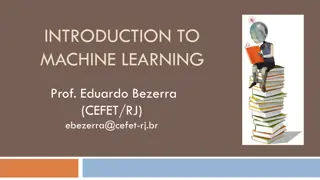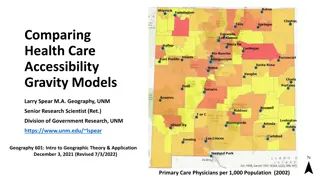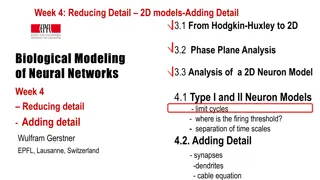Analyzing NFL Matchups: Predictive Models and Insights
Exploring predictive models for NFL game outcomes based on weather conditions, home/away advantage, and gambling spread effects. Utilizing logistic regression, decision tree, and neural network models to predict winners. Key variables include schedule date, season, team scores, stadium details, and more from data sets containing pre-game information for insightful analysis.
Download Presentation

Please find below an Image/Link to download the presentation.
The content on the website is provided AS IS for your information and personal use only. It may not be sold, licensed, or shared on other websites without obtaining consent from the author. Download presentation by click this link. If you encounter any issues during the download, it is possible that the publisher has removed the file from their server.
E N D
Presentation Transcript
PREDICTING NFL MATCHUPS Prepared By: Adam Kubiak and Jim Monk Group 2
BUSINESS PROBLEM DESCRIPTION The motivations behind this analysis overlap with the interest of gambling venues in terms of predicting the winners of these games, however, the results of this analysis differ. Project Objectives Explore how weather conditions, home/away, or if gambling spreads influence a NFL football game. Develop a model to predict a winner of an NFL game.
DATA OVERVIEW Attribute Name schedule_date schedule_season Data Type Nominal Numerical, Integer The year in which the season began Description The date on which the game occurred The primary dataset used for this analysis comes from Kaggle.com contributor spreadspoke and contains pre-game data related to NFL football games Contains 13,232 observations and 15 variables, five of which are continuous variables. A supplemental dataset with additional information on NFL contains an additional 15 variables and 107 observations. schedule_week Numerical, Integer The week of the game within the season schedule_playoff Nominal, Boolean Whether the game was a playoff game team_home score_home Nominal Numerical, Integer The number of points scored by the home team The home team s name score_away Numerical, Integer The number of points scored by the home team The prepared dataset has 2350 observations and eight variables including the target, six of which are continuous The Response Variable is home_team_win, a nominal variable team_away team_favorite_id Nominal Nominal The away team s name The 3-letter abbreviation for the team favorited to win the game A value added to a team s actual score, typically used in gambling8 Numerical, Integer The betting line used for gambling spread_favorite Numerical, Real Descriptive Analytics over_under_line stadium stadium_neutral Nominal Nominal, Boolean The stadium at which the game was played Whether the stadium was a neutral location, i.e. neither home nor away The temperature at game time in F weather_temperature Numerical weather_wind_mph Numerical The wind speed at game time in mph weather_humidity weather_detail ELEVATION home_team_win Numerical Nominal Nominal Nominal, Boolean The humidity at game time A description of game time weather The elevation of the stadium Whether the home team won the game
MODELING TECHNIQUES Model 1: Logistic Regression Model Generalized R2 value and target value is Binary. Model 2: Decision Tree Model Classification Tree since target variable is categorical. Great fit due to the fact we are determining a winner of a game. Model 3: Neural Network Model Efficiently models different types of relationships between variables. Offers better predictive performance at the expense of transparency.
LOGISTIC REGRESSION Final Model Created with seven independent variables Spread_Favorite by far had the biggest effect on winning games Miscalculation Rate .40 Generalized R2 value of .0477 Accuracy Rate of 60%
DECISION TREE Final Model One split was created within the decision tree It was split at Spread_Favorite when <-6.5 Miscalculation Rate .41 Measure Entropy RSquare Generalized RSquare Mean -Log p RASE Mean Abs Dev Misclassification Rate N Training 0.0269 0.0484 0.6610 0.4842 0.4690 0.4170 1645 Validation 0.0100 0.0181 0.6716 0.4892 0.4735 0.4142 Generalized R2 value of .0181 Accuracy Rate of 59% 705
BOOSTED NEURAL NETWORK Final Model This model was created using the 7 independent variables Boosted Neural Network, Number of Models = 100 Miscalculation Rate .40 Generalized R2 value of .0522 RASE value is .4818
MODEL COMPARISON Logistic Regression Model R-Squared Misclassification RASE Logistic Regression .0477 .3982 .4824 Decision Tree .0181 .4142 .4892 Decision Tree BNN .0523 .4026 .4818 BoostedNeural Network The Boosted Neural Network has the highest R-Squared value of 0.0523. The Boosted Neural Network is the best prediction model with its higher Area Under the Curve value of 0.6021.
CONCLUSION Model predictive performance was bad Source data needs reevaluation We still learned something!


